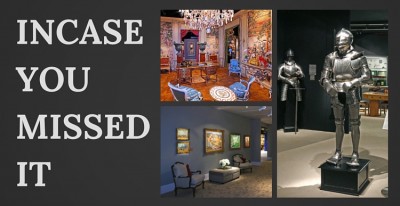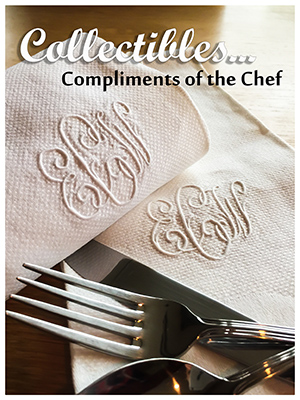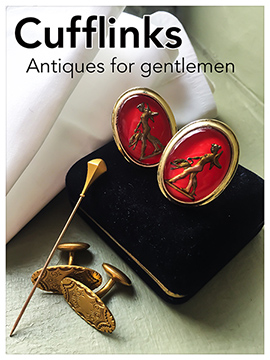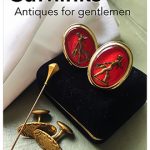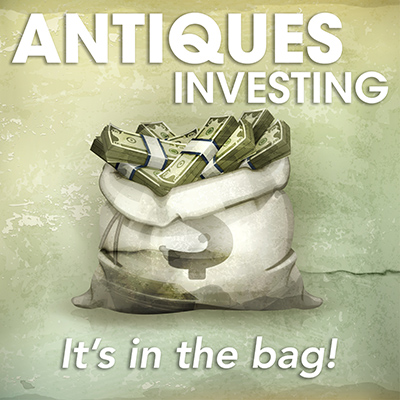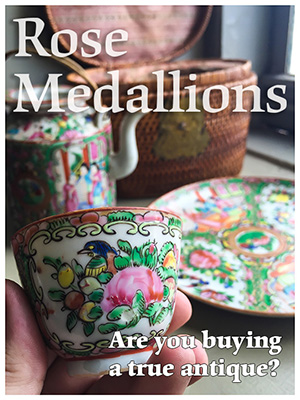
I’ll admit, as a young collector, the world of Asian export porcelains intimidated me. Unlike the French or German collectibles that had become almost instantly familiar to me, I did not so immediately catch on to the subtle nuances of Asian marking and execution.
It was then that I discovered my gateway into this world – Rose Medallion.
Rose Medallion is a type of Chinese export porcelain originating in the 1850’s to satisfy the immense demand for imported china in the European market. While its popularity started in Europe, it quickly swept across the Atlantic, allowing them to become wildly popular collectibles in sophisticated American homes. Though it is still being produced today, there is no comparison to the beauty of the original era, once you know what to look for.
First of all, let’s get our terms straight.
 Rose Medallion has a unique pattern, often containing a central medallion that is either a bird or a peony. Surrounding this will be four or more panels (depending on the size of the piece) with motifs depicting people, birds, butterflies and trees with dominant colors of pastel pinks and greens that can also include red, blue, yellow and gold.
Rose Medallion has a unique pattern, often containing a central medallion that is either a bird or a peony. Surrounding this will be four or more panels (depending on the size of the piece) with motifs depicting people, birds, butterflies and trees with dominant colors of pastel pinks and greens that can also include red, blue, yellow and gold.
“Rose Medallion” is oftentimes used as a blanket term to describe all porcelain of a similar configuration. In fact, if there are no birds or people pictured, that is “Rose Canton.” If there are people, but no birds, that is known as “Rose Mandarin.”
A simple way to start determining the age of a piece of Rose Medallion is whether it is marked. Works done before 1890 will have no mark whatsoever. Works done from 1890 up until circa 1920 will be marked “China.” After that, the mark will say “Made in China.”
Should you encounter pieces marked “Made in Hong Kong,” these are considered “modern” collectibles and should not be purchased as an “antique.”
The earliest pieces may have more pitting than later ones and should show some moderate scratches and general wear. Many pieces have gold rims and these, too, should show some wear from handling. Also, the gold itself will have crisp edges and a deeper luster than the painted-on gold of later techniques. Beyond that, these earlier pieces have, in general, a much finer quality of artwork and decoration.
Modern pieces, while shiny and eye-catching, do not hold up under inspection and it will be easy to quickly train your eye to spot when something just doesn’t look quite right. Again, that doesn’t mean they’re not worthwhile collectibles – if you like them – but they are not antiques.
Rose Medallion pieces and other similar collectibles are often on display at Palm Beach Show Group events. Their next antiques show will be held in New York City on November 20-24, followed by shows in Palm Beach on December 3-7, and Los Angeles on January 27-31.
